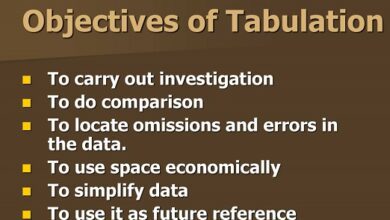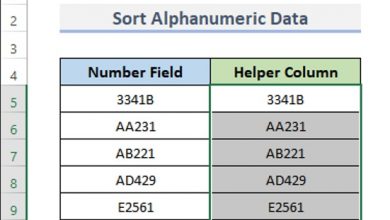Archetype analysis/Characteristics/How to perform
The Archetype analysis is an innovative research methodology both in the field of academic research and market research.
For this reason, in this article we have compiled what it consists of, what its main characteristics are and how to perform an analysis correctly.
What is archetype analysis?
Archetype analysis is a research method that consists of a comparative approach that seeks to identify recurring patterns between cases in which general regularities that apply to all cases cannot be expected.
The analysis generally investigates recurring patterns of the phenomenon of interest at an intermediate level of abstraction to identify multiple models that explain the phenomenon under particular conditions.
The quantitative research is often criticized for its excessive generalization and does not take into account the role of the context, whereas qualitative research is criticized for being too specific, neglecting the patterns that exist in all cases. Archetype analysis falls between these two polarities.
It is an approach capable of accommodating both inductive and deductive research designs and a variety of qualitative and quantitative methods (eg, cluster analysis, grounded theory, case study meta-analysis, process tracking, and simulation). Archetype analysis
Characteristics of archetype analysis
Some of the characteristics that define the analysis method are:
1. Archetypes are not universal
Archetype analysis identifies multiple recurring patterns in a set of heterogeneous empirical cases. The set of these patterns is called the set of archetypes. Therefore, it is not necessary that an archetype be maintained in all cases .
However, each archetype can be valid in several cases. The archetypal approach thus avoids falling into the “ideographic trap” in which all cases are considered unique.
2. Archetypes can be combined with other archetypes
Archetypes function as building blocks that can be combined with other archetypes to explain individual case phenomena. Thus, multiple archetypes can characterize the same case.
3. There is a common vocabulary of attributes
A set of archetypes and cases of interest are described with reference to a common vocabulary of attributes.
Attributes can be characteristics, variables, qualities, factors, or other properties chosen at an intermediate level of abstraction to strike a balance between case-based validity and generalizability. Each description does not require the use of all attributes. Archetype analysis
4. An attribute configuration must be done
Archetype analysis classifies the components of the cases that are present in subsets of the universe of cases (for example, phenomena or processes within the cases).
Thus, a single archetype does not necessarily characterize entire cases, but rather certain aspects of those cases . The component classes of the cases are described by attribute settings.
Each archetype is further characterized by a theory that explains the corresponding attribute configuration. Thus, each archetype of a set is characterized by three elements:
- An attribute configuration.
- A theory
- The set of cases in which it is true (called the validity domain, which is a subset of the universe of cases).
How to perform an archetype analysis?
Now that you know what an archetype analysis is, we will present you with 4 criteria to perform an analysis correctly:
1. Specify the scope of validity of each archetype
Establishing validity increases the credibility of any archetype analysis, and this can be based on the particular methods chosen for an archetype analysis.
It is also useful to distinguish between the validity of a single archetype and the validity of a set of archetypes , as well as between internal and external validity.
2. Build the archetype blocks
An archetype analysis should ensure that multiple archetypes can be combined in different ways to characterize individual cases.
Archetype analysis breaks down cases analytically into components that are classified by identifying recurring attribute configurations. You can then combine multiple archetypes, as if they were building blocks, to get a complete picture of a single case. Archetype analysis
The building blocks allow us to economize on the number of archetypes necessary to characterize heterogeneous cases. The challenge is to determine the appropriate limits for the building blocks, which in turn will serve as the limit of the validity scopes of the archetypes.
3. Choose the appropriate attributes
As we mentioned earlier, an archetype analysis must explicitly navigate different levels of abstraction.
Choosing the appropriate attributes involves analytical decisions about the level of abstraction at which cases and attributes are selected. In an analysis of city archetypes, for example, we could navigate between the cases that are households, neighborhoods, administrative boundaries or metropolitan areas.
We could navigate from more abstract attributes such as propensity for corruption in general, on vested interests in certain sectors, to the influence of specific organizations. If the attributes of interest are few and roughly described, the data may be more accessible, but with more risk of overgeneralization.
In contrast, specifying many attributes with detailed resolution can produce more precise analyzes capable of identifying specific causal mechanisms in a few cases, but makes it difficult to compare cases.
4. Perform a quality control of the archetypes
Each archetype in a set must obtain a fit between its attribute configuration, theory, and empirical evidence.
An archetype analysis that is designed to satisfy the above criteria in a consistent way has the best chance of generating new knowledge , theoretically rigorous and useful in practice. Archetype analysis
conclusion
As you can see, archetype analysis requires that the three elements that characterize each archetype be made explicit: the attribute configuration, the corresponding theory, and the validity domain.
Second, it is necessary to ensure that the three elements are coherent with each other. For example, if recurring configurations are determined but theories do not explain them, this indicates a lack of fit.
If you are conducting market research , archetype analysis can be an interesting methodology to identify recurring patterns in customer behavior, among its multiple applications.
In order to collect information, it is advisable to use tools such as online surveys to obtain real data on your customer base, or to use a combination of qualitative and quantitative methods that allow you to achieve better results.

